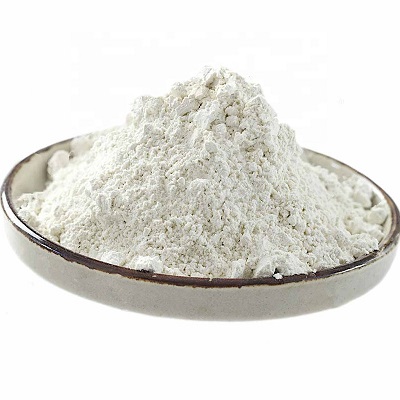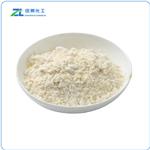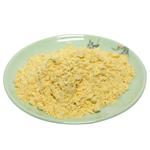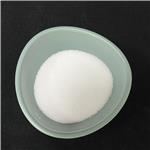Physical Properties
White crystalline solid, hexagonal; odor of ammonia in moist air; sublimes at 2000°C; melts in N2 atmosphere over 2200°C; decomposes in water, alkalies and acids.

Aluminum Nitride (AlN) is an ideal material for many semiconductor equipment and applications. With high resistance and low porosity, CoorsTek AlN outperforms other materials in process environments such as halogen gases and RF plasma.
Aluminum nitride is a high–thermal conductivity ceramic used as an electronic substrate. Also a key component in the production of sialons.
Uses
Aluminum nitride (AIN) is an important III-V group semiconductor material, which has aroused great attention due to many outstanding features including high thermal conductivity (~320 Wm10^ -1 K^-1), high electrical resistance (>10^10 Ωcm), low dielectric constant (8.6), wide band gap (6.2eV), and low thermal expansion coefficient (4.2x 10-6°C)-1 match to both Si and GaN semiconductors. AIl these properties make AIN an excellent candidate for use in electronic, light, and field- emission devices.
Aluminum nitride advantages
High heat dissipation with thermal conductivity of 170 W/m K
Non-toxic alternative to BeO
Thermal expansion coefficient similar to Si, GaN, and GaAs semiconductors
High dielectric strength.
Reactions
The nitride reacts with water forming aluminum hydroxide and ammonia.
AlN + 3H2O→ Al(OH)3 + NH3
The compound decomposes in alkalies and acids forming products of complex stoichiometry.
Chemical Properties
Crystalline solid.
Physical properties
Insulator (E
g =4.26 eV). Decomposes with water, acids,
and alkalis to Al(OH)
3 and NH
3. Crucible container for GaAs
crystal growth
Characteristics
Aluminum nitride is an excellent substrate for creating wide-band-gap semiconductors for wireless communications and power-industry applications. Since aluminum nitride withstands very high temperatures, this substrate material can be used for microelectronic devices on jet engines. Such substrates also would improve the production of blue and ultraviolet lasers that could be used to squeeze a full-length movie onto a CD. Aluminum nitride crystals have also been grown in a tungsten crucible at 2300°C.
Uses
In semiconductor electronics; in steel manufacture. AlN components and substrates are used in electrical engines, microelectronics, naval radio and defense systems, railway transport systems, telecommunications and research satellites, and emission control systems.
Uses
Aluminum nitride is a refractory ceramic that is used as an electrically insulating material in applications similar to aluminum oxide. AlN is also used in optical and semiconductor devices with GaN to produce LEDs on sapphire and in piezoelectric MEMS devices.
Uses
Aluminum nitride possesses very high thermal conductivity and effectively used in the ceramic industry. It finds application in deep ultraviolet optoelectronics, steel production, dielectric layers in optical storage media, chip carriers and as a crucible to grow crystals of gallium arsenide. It is also used as a radio frequency filter, which finds application in mobile phones. Further, it is used as a circuit carrier in semiconductors. In addition to this, it is used as a heat-sink in light-emitting diode lighting technology.
Definition
ChEBI: Aluminium nitride is a nitride.
Preparation
Aluminum nitride is conveniently prepared by an electric arc between aluminum electrodes in a nitrogen atmosphere. Crucibles of the pressed powder, sintered at 1985°C, are resistant to liquid aluminum at 1985°C, to liquid gallium at 1316°C, and to liquid boron oxide at 1093°C. Aluminum nitride has good thermal shock resistance and is only slowly oxidized in air (1.3% converted to Al2O3 in 30 h at 1427°C). It is inert to hydrogen at 1705°C but is attacked by chlorine at 593°C.
Flammability and Explosibility
Non flammable
Industrial uses
Aluminum nitride is an excellent substrate for creating wide-band-gap semiconductors for wireless communications and power-industry applications. Since aluminum nitride withstands very high temperatures, this substrate material can be used for microelectronic devices on jet engines. Such substrates also would improve the production of blue and ultraviolet lasers that could be used to squeeze a full-length movie onto a CD. Aluminum nitride crystals have also been grown in a tungsten crucible at 2300 C.
Materials Uses
Aluminum nitride (AlN) has an unusual combination of properties: it is an electrical insulator, but an excellent conductor of heat. This is just what is wanted for substrates for high-powered electronics; the substrate must insulate yet conduct the heat out of the microchips. This, and its high strength, chemical stability, and low expansion give it a special role as a heat sinks for power electronics. Aluminum nitride starts as a powder, is pressed (with a polymer binder) to the desired shape, then fired at a high temperature, burning off the binder and causing the powder to sinter.
Aluminum nitride is particularly unusual for its high thermal conductivity combined with a high electrical resistance, low dielectric constant, good corrosion, and thermal shock resistance.
Typical uses. Substrates for microcircuits, chip carriers, heat sinks, electronic components; windows, heaters, chucks, clamp rings, gas distribution plates.
Toxics Screening Level
The Initial Threshold Screening Level (ITSL) is 0.03 μg/m3 with an annual averaging time.







